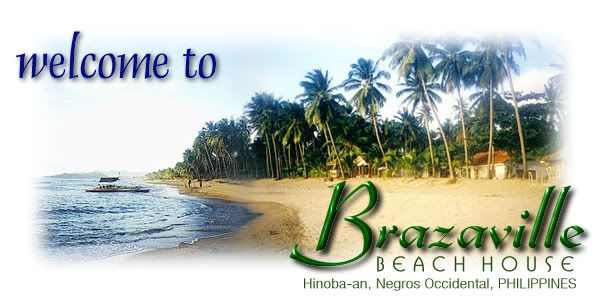Negros is an island of the Philippines located in the Visayas, at 10° N 123° E. It is the fourth-largest island in the country, with a land area of 12,706 km² (4,905 square mi.). People on the island are called Negrenses.
Geography
Politically and culturally, Negros is divided into two provinces: Negros Oriental in the Central Visayas region and Negros Occidental, part of the Western Visayas region. This division of the island, which roughly follows the mountain range in the center of the island, corresponds to the two ethnoliguistic groups in this part of the country. The western part (Occidental) is where the Ilonggo- or Hiligaynon-speaking Negrenses are located, and the eastern portion (Oriental) is home to the Cebuano-speaking population.
The chief cities on the island are Bacolod City in Negros Occidental and Dumaguete City in Negros Oriental.
Negros is noted for being the country's prime producer of sugar. Sugar cane plantations abound in the agricultural areas of the island.
Kanlaon Volcano in the northern part of the island is a semi-active volcano and overlooks Bacolod City. It is the highest peak on the island as well as all of the Visayas region. Other notable peaks on the island are Mt. Silay and Mt. Mandalagan in Negros Occidental, and Cuernos de Negros in Negros Oriental.
The volcanic activity in Negros is harvested into electricity through two geothermal power plants in the island. One is located in Palinpinon, Negros Oriental, and the other, to open in 2007, is in Mailum, Negros Occidental.
History
Negros Island was originally called Buglas - an old native word thought to mean "cut off." It is believed that Negros was once part of a greater mass of land, but was cut off either by what geologists call continental drift or by rising waters during the Ice age. Among its earliest inhabitants were dark-skinned natives belonging to the Negrito ethnic group, who had a unique culture.
Thus, the Spaniards called the land Negros after the black natives they saw on their arrival on the island in April 1565. Two of the earliest native settlements, Binalbagan and Ilog, became towns in 1573 and 1584, respectively. Other settlements were Hinigaran, Bago, Marayo (now Pontevedra), Mamalan (now Himamaylan), and Candaguit (a sitio in San Enrique).
After appointing "encomienderos" for the island, Miguel López de Legaspi placed Negros under the jurisdiction of the governor of Oton on Panay. In 1734, however, the island became a military district and Ilog was made its first capital. The seat of government was later transferred to Himamaylan until Bacolod became the capital in 1849.
In 1890, the island was divided into Negros Occidental and Negros Oriental.
Republic Era
From November 3 to November 6, 1898, the Negrenses rose in revolt against the Spanish authorities headed by politico-military governor Colonel Isidro de Castro. The Spaniards decided to surrender upon seeing armed troops marching in a pincer movement towards Bacolod. The revolutionaries, led by General Juan Araneta from Bago and General Aniceto Lacson from Talisay, were actually carrying fake arms consisting of rifles carved out of palm fronds and cannons of rolled bamboo mats painted black. By the afternoon of November 6, Colonel de Castro signed the Act of Capitulation, thus ending Spanish rule in Negros Occidental. This event is commemorated in Negros Occidental every November 5 as the day the Negrenses bluffed the Spaniards to attain their freedom.
For a detailed article on this event, see Negros Revolution.
November 5 has been declared a special non-working holiday in the province through Republic Act. No. 6709 signed by President Corazon Aquino on February 10, 1989.
On November 27, 1898, the Cantonal Republic of Negros was established. It came under U.S. protection on April 30, 1899. On July 22, 1899, it was renamed the Republic of Negros (República de Negros), but on April 30, 1901, this was dissolved by the United States.
Leaders
The presidents of the short-lived republic were:
* Aniceto Lacson -- November 5, 1898 - July 22, 1899 (to November 27, 1898, in Negros Occidental only)
* Demetrio Larena -- November 24, 1898 - November 27, 1898 (in Negros Oriental)
* President of the Constituent Assembly José Luzuriaga -- July 22, 1899 - November 6, 1899
* Secretary of War Juan Araneta
* Civil Governor Melecio Severino -- November 6, 1899 - April 30, 1901
Reference: http://en.wikipedia.org/wiki/Negros
Negros Island maps




1 comment:
What's up to every body, it's my first pay a visit of this weblog;
this weblog consists of awesome and in fact excellent stuff in favor
of readers.
My web page ... Spazio-kovan
Post a Comment